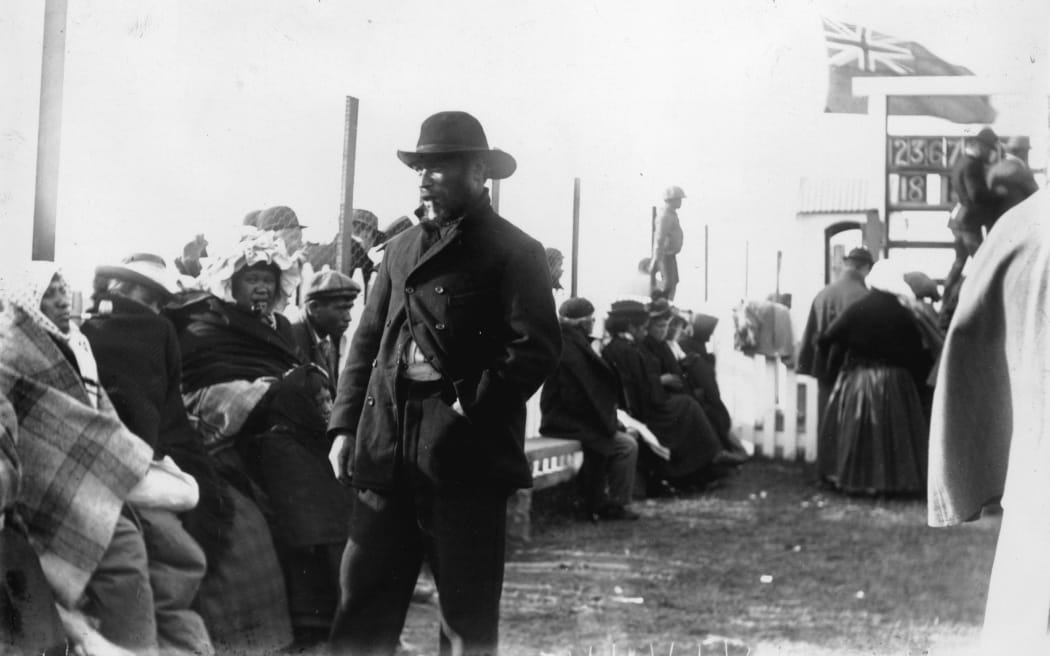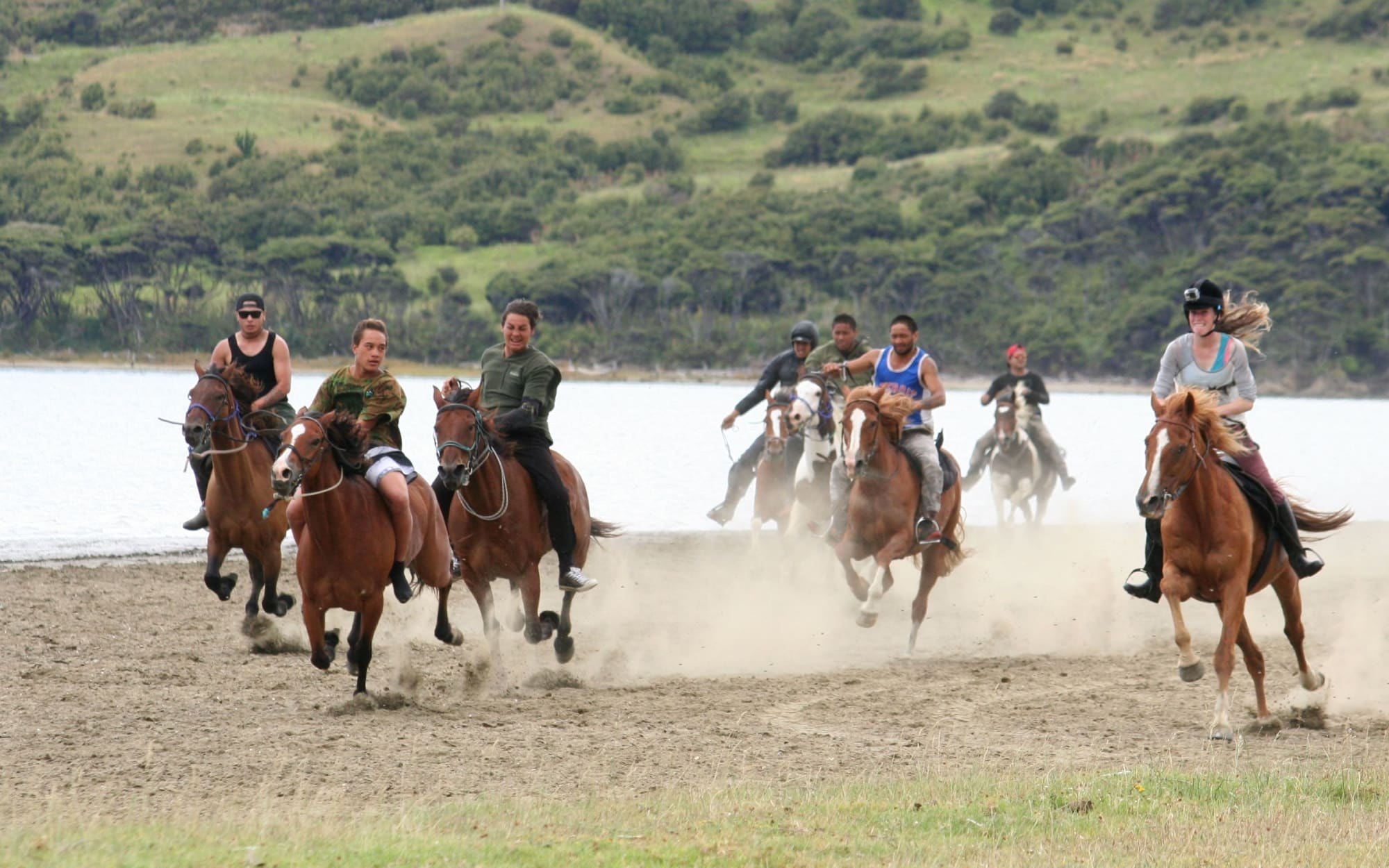Horses were introduced to New Zealand in 1814 and Māori communities soon began use them in work and leisure activities. By the late 1800s there were horse-racing competitions between local hapū and registered racing clubs.
On a hot New Year’s Day in the late 1800s, Māori gathered at Ōtaki for the annual race day. The event started early to accommodate many horse races, and tribal groups broke out in haka to support their jockeys.
A fence made of split mānuka branches lined the track, barely separating the cheering people from the horses.
Children ran to vantage points around the course to catch glimpses of the action, while the elderly sat back and watched from a grandstand made from the horse carts in which they had travelled to Ōtaki.
There was much entertainment off the track: brass bands, merchants and sideshow attractions were set up in the paddocks.
As the day warmed, whānau found shady spots to eat kai, and as the day wound down the people gathered to watch the winning jockeys receive their prizes. One year a rooster was presented, most likely alive. Saddles, blankets and clothing made up the prize pools in the coming years.
Eventually cash prizes became common. This was an exciting regional event and Māori communities far and wide brought their best horses, kai and hapū pride.
Māori horse-racing events similar to this were common throughout the country. Horses were introduced to New Zealand in 1814 and as they became more accessible Māori communities began to integrate them into their work and leisure-time routines.

Māori spectators at the Ōtaki-Māori Racing Club, around 1900 Photo: Malcolm Ross, c.1900, Alexander Turnbull Library, 1/4-01 7589-G
By the late 1800s there were horse-racing competitions between local hapū and whānau.
For some areas, like Ōtaki, horse racing became a registered club sport. Some other Māori racing clubs established by the 1890s included the ‘Akura Maori Racing Club in the Wairarapa, Waiomatatini Native Jockey Club in Poverty Bay, and the Turanganui Native Jockey Club in Gisborne’ – although, out of all of these organisations, the Ōtaki-Māori Racing Club was the only one to survive into the twentieth century.
It is a history that illustrates how rangatiratanga was expressed in dynamic and even fun ways in the nineteenth century, an assertion of tribal pride that many Māori communities continue to maintain to this day.
The first recorded race meet at Ōtaki took place in 1854, as Māori were beginning to investigate pan-iwi options for resisting land alienation and organising for political independence, but before the New Zealand wars in Taranaki and Waikato came to dominate the tribalscape.
Even by the 1870s, as conflict between Māori and the Crown continued to permeate New Zealand’s landscape, Ōtaki’s annual race day remained a popular event, with participants travelling from as far afield as Whanganui and Wellington.

Horses (hōiho) were first introduced in 1814, at Rangihoua. They were initially scarce, representing a significant investment and thus prosperity. By the 1850s, however, horses were the most common form of transport. This group, sketched in 1861, is on the way to market. Photo: Watercolour by John Sawdon Harland, 1861, Alexander Turnbull Library, A-159-036
The Ōtaki races became a clear expression of tribal enterprise and rangatiratanga in about 1886, when the Ōtaki-Māori Racing Club was established and decreed that only descendants of Ngāti Raukawa, Ngāti Toa and Te Āti Awa could become full club members and officials.
Māori were by far the majority of the two to three thousand punters and supporters recorded at early race meets.
Not many Pākehā lived in the region, but around 200 still attended and were even invited to assist with the meets.
This was a Māori world that had incorporated new activities and ideas into its tribal institutions and cultural rhythms. For the people of Ōtaki in the late 1800s, these included Rangiātea church, Raukawa marae and the Ōtaki-Māori Racing Club.
*This story draws on text and themes in Atholl Anderson, Judith Binney and Aroha Harris, Tangata Whenua: An Illustrated History, Bridget Williams Books, 2014. Additional sources: Alastair Bull, The Otaki-Maori Racing Club: A History 1886-1990, and History of the Otaki-Maori Racing Club.
(Main image: Horse racing at the United Marae Sports Day held in Pawarenga, Northland, 2017 : Copyright: Lindsey Davidson).


